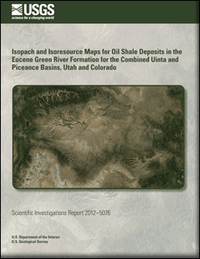The in-place oil shale resources in the Eocene Green River Formation of the Piceance Basin of western Colorado and the Uinta Basin of western Colorado and eastern Utah are estimated at 1.53 trillion barrels and 1.32 trillion barrels, respectively. The oil shale strata were deposited in a single large saline lake, Lake Uinta, that covered both basins and the intervening Douglas Creek arch, an area of comparatively low rates of subsidence throughout the history of Lake Uinta. Although the Green River Formation is largely eroded for about a 20-mile area along the crest of the arch, the oil shale interval is similar in both basins, and 17 out of 18 of the assessed oil shale zones are common to both basins. Assessment maps for these 17 zones are combined so that the overall distribution of oil shale over the entire extent of Lake Uinta can be studied. The combined maps show that throughout most of the history of Lake Uinta, the richest oil shale was deposited in the depocenter in the north-central part of the Piceance Basin and in the northeast corner of the Uinta Basin where it is closest to the Piceance Basin, which is the only area of the Uinta Basin where all of the rich and lean oil shale zones, originally defined in the Piceance Basin, can be identified. Both the oil shale and saline mineral depocenter in the Piceance Basin and the richest oil shale area in the Uinta Basin were in areas with comparatively low rates of subsidence during Lake Uinta time, but both areas had low rates of clastic influx. Limiting clastic influx rather than maximizing subsidence appears to have been the most important factor in producing rich oil shale.


